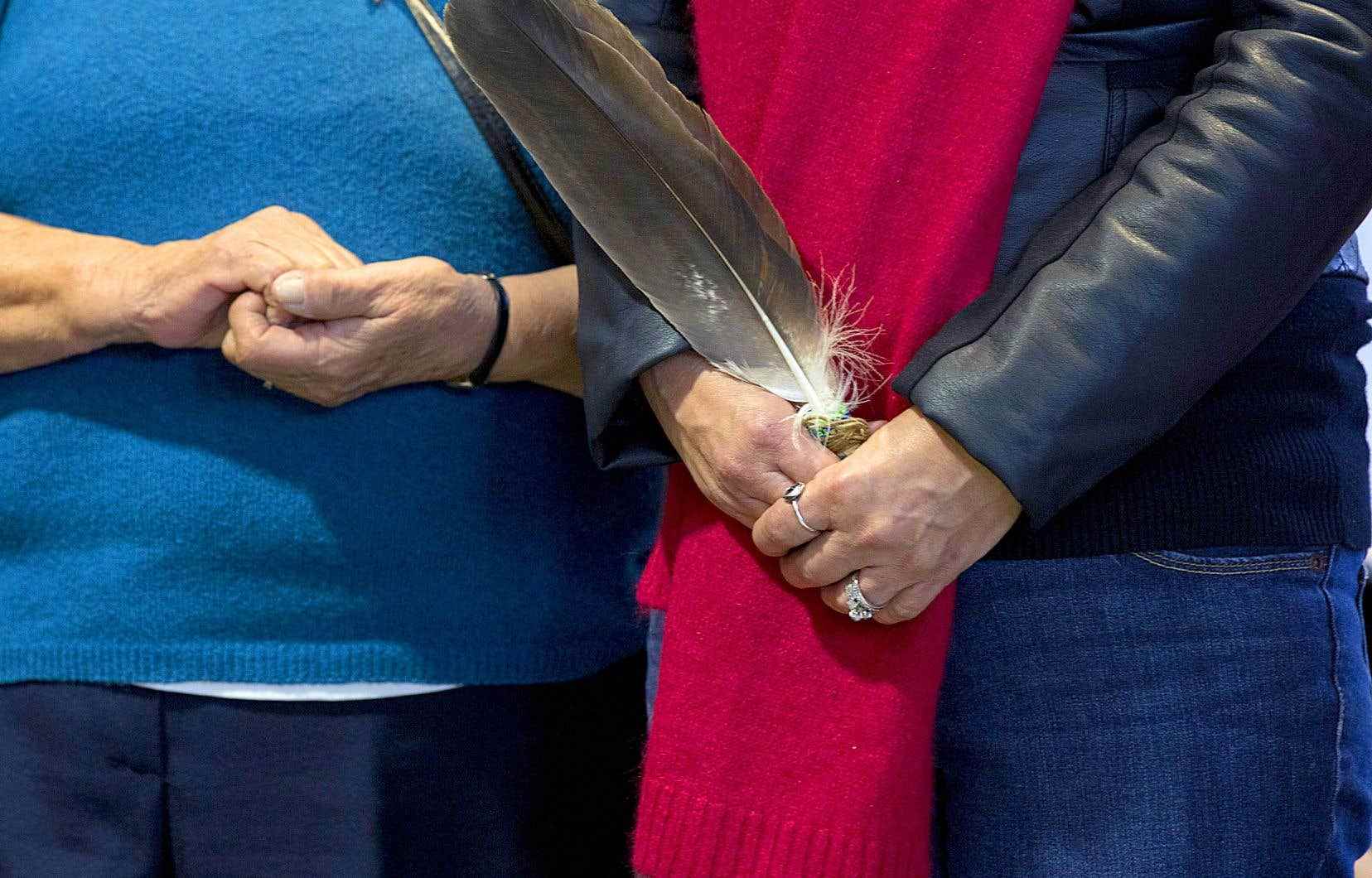The term “Aboriginal” has become over the years a catch-all concept, in which some do not hesitate to maintain a real business. How many of them invent Anishinaabe, Abenaki or Micmac Métis roots in order to take advantage of subsidies or access positions that are not reserved for them? A plethora, if we are to believe Professor Darryl Leroux’s essay, Diverted ancestry. When Whites Claim Indigenous Identitywho has been interested in the issue for several years.
First published in English in 2019 under the title Distorted Descent: White Claims to Indigenous Identity, the book translated with four hands by Darryl Leroux and Aurélie Lacassagne is timely. Cases of Indigenous identity theft are on the rise, and media investigations that regularly highlight cases of cultural appropriation are just the tip of the iceberg, says the Franco-Ontarian-born author .
“When a person goes so far as to change their own identity, it is generally to have something behind it which can be pecuniary or to have access to a certain social or cultural capital”, explains the professor at the Department of Justice. Social and Community Studies from Saint Mary’s University in Halifax, Nova Scotia.
The phenomenon has been on the rise since the 2003 Powley decision, which set out a series of criteria for a person to be recognized as Métis. A Supreme Court decision which, according to the author, has broadened the very definition of indigenous identity, which has allowed white populations to claim indigenous rights.
“Between 2001 and 2016, the number of individuals identifying themselves as Métis in Quebec more than quadrupled, from 15,850 to 69,360,” indicates the author.
Never seen
The phenomenon does not only affect Quebec, but all of eastern Canada. From Ontario to New Brunswick, 300,000 Franco-descendants have defined themselves as Aboriginal. ” This is unheard of ! The problem is when these people come together in organized groups to claim rights to the very detriment of the indigenous peoples already present in the territory. »
For the past twenty years, whites who have redefined themselves as Métis without official recognition, particularly among descendants of French origin in Quebec, where there is a real enthusiasm for genealogical research, “have used a single ancestor born in the XVIIe century to claim a tenuous Aboriginal identity, with no apparent connection to a traditional Aboriginal community,” explains Darryl Leroux.
This phenomenon, which the author dubs in his essay “self-indigenousness”, has its origins in various stories, mostly constructed from start to finish or fantasized. This “revisionism” has long helped to cover our tracks. Darryl Leroux, for example, rejects the popular belief that Quebecers are the result of interbreeding between the First Peoples and the settlers of New France. He relies on various previous works, such as those of the historian Dominique Deslandres, who described the theory of a Franco-Aboriginal identity conveyed in historiography as a “chimera of interbreeding”.
Half-breeds and half-breeds
In his essay, Darryl Leroux makes the distinction between the claims of the supposed Métis of the East and the Métis of Western Canada (with a capital M), who are considered to be one of the three officially recognized Aboriginal peoples. by the federal authorities in the same way as the First Nations and the Inuit.
“The Métis of the Prairies reject the fact that their identity is based on a genetic link or on an imaginary blood,” says Darryl Leroux. They have developed their own traditions, stemming from close cultural and linguistic ties with the Crees, Assiniboines, and Saulteaux. »
“It has nothing to do with what is currently happening in eastern Canada, where it is a question of individuals claiming to be mixed race by an ancestor who lived in the 1600s and who are trying to rewrite history to affirm that there was in this part of the country a distinct people. Which is not true,” he continued.
Throughout the chapters, the author lists the different approaches of individuals who build a “mestizo” identity and dissects online genealogy forums in order to bring to light the process of auto-indigenousness, generally based on a distant ancestor. , more than ten generations apart. “There is much more to Aboriginal identity than the traces of a remote ancestor,” he notes.
A racist and colonial logic
Obviously, the process is not new. The country has often seen characters here and there pretending to be Aboriginal. Already at the dawn of the XIXe century, the Briton Archibald Belaney, alias Gray Owl (“Grey Owl”), spread paint on his face to invent Ojibwe ancestors.
But according to Darryl Leroux, the current situation is on a different scale and weakens the struggles of the First Nations in this part of Canada, in particular with regard to land claims. “It’s a whole movement that is organizing to literally seize the ancestral lands and the identity of the Aboriginals, and which is based on identity principles stemming from a racist and colonial logic”, he underlines .
So far, legal proceedings initiated by self-proclaimed Métis organizations (more than 25 organizations since 2003 in Quebec alone) or by individuals have all failed, but until when? asks the author. “However, this social and political movement poses a real threat to the self-determination of indigenous peoples. »
